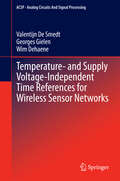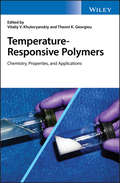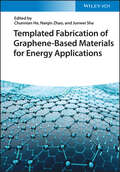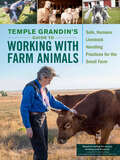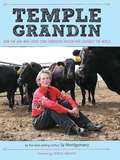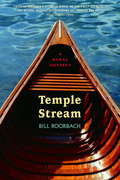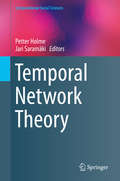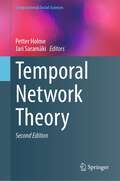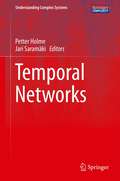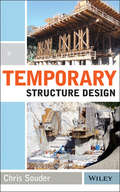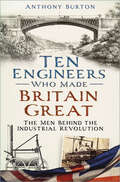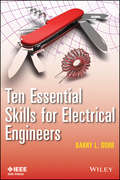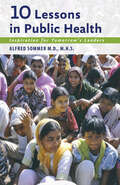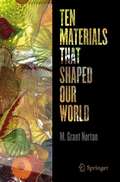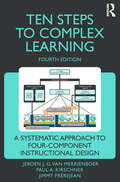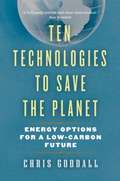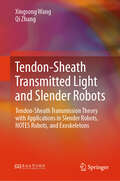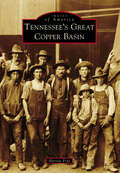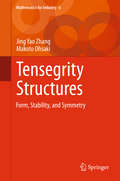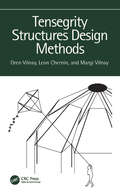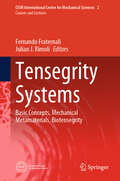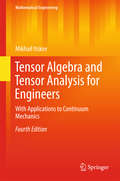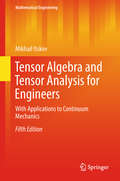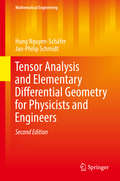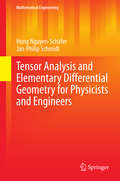- Table View
- List View
Temperature- and Supply Voltage-Independent Time References for Wireless Sensor Networks
by Wim Dehaene Georges Gielen Valentijn De SmedtThis book investigates the possible circuit solutions to overcome the temperature and supply voltage-sensitivity of fully-integrated time references for ultra-low-power communication in wireless sensor networks. The authors provide an elaborate theoretical introduction and literature study to enable full understanding of the design challenges and shortcomings of current oscillator implementations. Furthermore, a closer look to the short-term as well as the long-term frequency stability of integrated oscillators is taken. Next, a design strategy is developed and applied to 5 different oscillator topologies and 1 sensor interface. All 6 implementations are subject to an elaborate study of frequency stability, phase noise and power consumption. In the final chapter all blocks are compared to the state of the art.
Temperature-Responsive Polymers: Chemistry, Properties, and Applications
by Vitaliy V. Khutoryanskiy Theoni K. GeorgiouAn authoritative resource that offers an understanding of the chemistry, properties and applications of temperature-responsive polymers With contributions from a distinguished panel of experts, Temperature-Responsive Polymers puts the focus on hydrophilic polymers capable of changing their physicochemical properties in response to changes in environmental temperature. The contributors review the chemistry of these systems, and discuss a variety of synthetic approaches for preparation of temperature-responsive polymers, physicochemical methods of their characterisation and potential applications in biomedical areas. The text reviews a wide-variety of topics including: The characterisation of temperature-responsive polymers; Infrared and Raman spectroscopy; Applications of temperature-responsive polymers grafted onto solid core nanoparticles; and much more. The contributors also explore how temperature-responsive polymers can be used in the biomedical field for applications such as tissue engineering. This important resource: Offers an important synthesis of the current research on temperature-responsive polymers Covers the chemistry, the synthetic approaches for presentation and the physiochemical method of temperature-responsive polymers Includes a review of the fundamental characteristics of temperature-responsive polymers Explores many of the potential applications in biomedical science, including drug delivery and gene therapy Written for polymer scientists in both academia and industry as well as postgraduate students working in the area of stimuli-responsive materials, this vital text offers an exploration of the chemistry, properties and current applications of temperature-responsive polymers.
Templated Fabrication of Graphene-Based Materials for Energy Applications
by Chunnian He Naiqin Zhao Junwei ShaTemplated Fabrication of Graphene-Based aterials for Energy Applications An illuminating look at the latest research on graphene-based materials and their applications in energy In Templated Fabrication of Graphene-Based Materials for Energy Applications, a team of distinguished materials scientists delivers a unique and topical exploration of a versatile fabrication method used to create high-quality graphene and composites. The book offers a three-part approach to current topics in graphene fabrication. The first part introduces graphene-based materials and is followed by cutting-edge discussions of template methods used in the preparation of graphene-based materials. The editors conclude with the latest research in the area of graphene-based materials applications in various energy-related pursuits. Readers will find relevant content that refers to original research conducted by the editors themselves, as well as work from up-and-coming and established researchers that explores the most interesting horizons in the study of graphene-based materials. The book also provides: A thorough introduction to graphene, including its history and physical properties An in-depth analysis of current graphene synthesis strategies, including the classification of graphene preparations Expansive discussions of various kinds of template methods for graphene production, including the study of porous metals and the preparation of graphene in large quantities Comprehensive explorations of the applications of various graphene-based materials, including lithium-ion batteries, lithium-sulfur batteries, and supercapacitors Perfect for materials scientists, electrochemists, and solid-state physicists, Templated Fabrication of Graphene-Based Materials for Energy Applications will also earn a place in the libraries of physical chemists and professionals in the electrotechnical industry.
Temple Grandin's Guide to Working with Farm Animals: Safe, Humane Livestock Handling Practices for the Small Farm
by Temple GrandinAward-winning author Temple Grandin is famous for her groundbreaking approach to decoding animal behavior. Now she extends her expert guidance to small-scale farming operations. Grandin&’s fascinating explanations of how herd animals think — describing their senses, fears, instincts, and memories — and how to analyze their behavior, will help you handle your livestock more safely and effectively. You&’ll learn to become a skilled observer of animal movement and behavior, and detailed illustrations will help you set up simple and efficient facilities for managing a small herd of 3 to 25 cattle or pigs, or 5 to 100 goats or sheep.
Temple Grandin: How the Girl Who Loved Cows Embraced Autism and Changed the World
by Temple Grandin Sy MontgomeryWhen Temple Grandin was born, her parents knew that she was different. Years later she was diagnosed with autism. While Temple's doctor recommended a hospital, her mother believed in her. Temple went to school instead. Today, Dr. Temple Grandin is a scientist and professor of animal science at Colorado State University. Her world-changing career revolutionized the livestock industry. As an advocate for autism, Temple uses her experience as an example of the unique contributions that autistic people can make. This compelling biography complete with Temple's personal photos takes us inside her extraordinary mind and opens the door to a broader understanding of autism.
Temple Stream: A Rural Odyssey
by Bill RoorbachI call the stream ours because our house is in its valley and a corner of our land touches the stream at a dramatic bend, and because my wife and our daughter (always in the company of our dogs) walk down to that bend every morning, every season. The stream is our point of contact with all the waters of the world. Great blue herons, yellow birches, damselflies, and beavers are among the many runes by which Bill Roorbach discovers a universe of nature along the stream that runs by his home in Farmington, Maine. Populated by an oddball cast of characters to whom the generous-spirited Roorbach (aka "The Professor") and his family might always be outsiders, these pages chronicle one man's determination - sometimes with hilarious results - to follow his stream directly to its elusive source. Acclaimed essayist as well as award-winning author of fiction, Bill Roorbach brings his singular literary gifts to a book that is inspirational, funny, loving, and filled with the wonder of living side by side with the natural world. Praise for Bill Roorbach "Roorbach falls, for me, into that small category of writers whose every book I must read, then reread. " --Jay Parini, author of The Apprentice Lover "Here is a narrator who makes you glad to be alive, giddy to be in his presence, grateful to love friends and family and dogs with generosity and abandon, to show tenderness and thus be saved by strangers. " --Melanie Rae Thon, author of First, Body "Roorbach is a master at capturing and expressing joy. " --Hartford Courant "Roorbach has a knack for tapping into deep undercurrents and bringing them to the surface with the least amount of fanfare or fuss. " --L. A. Weekly From the Hardcover edition.
Temporal Network Theory (Computational Social Sciences)
by Jari Saramäki Petter HolmeThis book focuses on the theoretical side of temporal network research and gives an overview of the state of the art in the field. Curated by two pioneers in the field who have helped to shape it, the book contains contributions from many leading researchers. Temporal networks fill the border area between network science and time-series analysis and are relevant for the modeling of epidemics, optimization of transportation and logistics, as well as understanding biological phenomena. Network theory has proven, over the past 20 years to be one of the most powerful tools for the study and analysis of complex systems. Temporal network theory is perhaps the most recent significant development in the field in recent years, with direct applications to many of the "big data" sets. This monograph will appeal to students, researchers and professionals alike interested in theory and temporal networks, a field that has grown tremendously over the last decade.
Temporal Network Theory (Computational Social Sciences)
by Jari Saramäki Petter HolmeThis book focuses on the theoretical side of temporal network research and gives an overview of the state of the art in the field. Curated by two pioneers in the field who have helped to shape it, the book contains contributions from many leading researchers. Temporal networks fill the border area between network science and time-series analysis and are relevant for epidemic modeling, optimization of transportation and logistics, as well as understanding biological phenomena. Over the past 20 years, network theory has proven to be one of the most powerful tools for studying and analyzing complex systems. Temporal network theory is perhaps the most recent significant development in the field in recent years, with direct applications to many of the “big data” sets. This book appeals to students, researchers, and professionals interested in theory and temporal networks—a field that has grown tremendously over the last decade. This second edition of Temporal Network Theory extends the first with three chapters highlighting recent developments in the interface with machine learning.
Temporal Networks
by Jari Saramäki Petter HolmeThe concept of temporal networks is an extension of complex networks as a modeling framework to include information on when interactions between nodes happen. Many studies of the last decade examine how the static network structure affect dynamic systems on the network. In this traditional approach the temporal aspects are pre-encoded in the dynamic system model. Temporal-network methods, on the other hand, lift the temporal information from the level of system dynamics to the mathematical representation of the contact network itself. This framework becomes particularly useful for cases where there is a lot of structure and heterogeneity both in the timings of interaction events and the network topology. The advantage compared to common static network approaches is the ability to design more accurate models in order to explain and predict large-scale dynamic phenomena (such as, e.g., epidemic outbreaks and other spreading phenomena). On the other hand, temporal network methods are mathematically and conceptually more challenging. This book is intended as a first introduction and state-of-the art overview of this rapidly emerging field.
Temporary Structure Design
by Christopher SouderA comprehensive guide to temporary structures in construction projects Temporary Structure Design is the first book of its kind, presenting students and professionals with authoritative coverage of the major concepts in designing temporary construction structures. Beginning with a review of statistics, it presents the core topics needed to fully comprehend the design of temporary structures: strength of materials; types of loads on temporary structures; scaffolding design; soil properties and soil loading; soldier beam, lagging, and tiebacks; sheet piling and strutting; pressure and forces on formwork and falsework; concrete formwork design; falsework; bracing and guying; trestles and equipment bridges; and the support of existing structures. Temporary structures during construction include scaffolding, formwork, shoring, ramps, platforms, earth-retaining structures, and other construction structures that are not part of the permanent installation. These structures are less regulated and monitored than most other parts of the construction process, even though they are often supporting tons of steel or concrete—and the safety of all workers on the site depends on these structures to perform as designed. Unfortunately, most tragic failures occur during construction and are usually the result of improperly designed, constructed, and/or maintained temporary structures. Temporary Structure Design fills an important need in the literature by providing a trusted, comprehensive guide to designing temporary construction structures. Serves as the first book to provide a design-oriented approach to the design of temporary structures Includes coverage of the various safety considerations inherent in temporary structure design and construction Provides information on estimating cost and schedules for these specialized structures Covers formwork and falsework, as well as personnel protection, production support, environmental protection, and foundational structures If you're a student or a professional working in the field of construction or structural engineering, Temporary Structure Design is a must-have resource you'll turn to again and again.
Ten Engineers Who Made Britain Great: The Men Behind the Industrial Revolution
by Anthony BurtonSamuel Smiles published Lives of the Engineers in 1862. The noted biographer presented his engineers as heroic progress makers who conquered nature and overcame impossible obstacles to drive the Industrial Revolution forward, but included twisted and often fabricated accounts in his work.In Ten Engineers Who Made Britain Great, Anthony Burton seeks to correct this narrative by offering nuanced portraits of some of the best-known engineers of the eighteenth and nineteenth centuries. Burton investigates the common themes that run between the stories of John Metcalf, James Brindley, John Smeaton, William Jessop, Thomas Telford, James Watt, Richard Trevithick, George and Robert Stephenson, and Isambard Kingdom Brunel, and also explores how each of these men learned from one another.
Ten Essential Skills for Electrical Engineers
by Barry DorrEngineers know that, as in any other discipline, getting a good job requires practical, up-to-date skills. An engineering degree provides a broad set of fundamentals. Ten Essential Skills applies those fundamentals to practical tasks required by employers. Written in a user-friendly, no-nonsense format, the book reviews practical skills using the latest tools and techniques, and features a companion website with interview practice problems and advanced material for readers wishing to pursue additional skills. With this book, aspiring and current engineers may approach job interviews confident in their grasp of the engineering skills that their employers seek.
Ten Lessons in Public Health: Inspiration for Tomorrow's Leaders
by Alfred SommerA riveting personal tale of the rise of public health.There are occasions when a story told from a personal viewpoint can illuminate a profession. Alfred Sommer’s epidemiological memoir is such a book. Adventurous, illuminating, and thought provoking, Ten Lessons in Public Health is more than the story of one man’s work. It tells the tale of how epidemiology grew into global health. The book is organized around ten lessons Sommer learned as his career took him around the world, and within these lessons he explains how the modern era of public health research was born. Three themes emerge from Sommer's story: the duty to help your fellow human beings by traveling to places where there are problems; the knowledge that data-driven research is the key to improving public health; and the need to persevere with sensitivity and strength when science and cultural or sociological forces clash. Nothing in this compelling, sometimes controversial, history is glossed over, as the book’s goal is to explain when and why public health efforts triumph or fail. Readers will travel to Bangladesh, Iran, Indonesia, South America, and the Caribbean, where they will learn about spreading epidemics, the aftermath of storms, and vexing epidemiological problems. Sommer reveals the inner politics of world health decisions and how difficult it can be to garner support for new solutions. Triumph, tragedy, frustration, and elation await those who set off on careers in public health, and Ten Lessons in Public Health is destined to become a classic book that puts the field into perspective.
Ten Materials That Shaped Our World
by M. Grant NortonThis book examines ten materials—flint, clay, iron, gold, glass, cement, rubber, polyethylene, aluminum, and silicon—explaining how they formed, how we discovered them, why they have the properties they do, and how they have transformed our lives. Since the dawn of the Stone Age, we have shaped materials to meet our needs and, in turn, those materials have shaped us.The fracturing of flint created sharp, curved surfaces that gave our ancestors an evolutionary edge. Molding clay and then baking it in the sun produced a means of recording the written word and exemplified human artistic imagination. As our ability to control heat improved, earthenware became stoneware and eventually porcelain, the most prized ceramic of all. Iron cast at high temperatures formed the components needed for steam engines, locomotives, and power looms—the tools of the Industrial Revolution. Gold has captivated humans for thousands of years and has recently found important uses in biology, medicine, and nanotechnology. Glass shaped into early and imperfect lenses not only revealed the microscopic world of cells and crystals, but also allowed us to discover stars and planets beyond those visible with the naked eye. Silicon revolutionized the computer, propelling us into the Information Age and with it our interconnected social networks, the Internet of Things, and artificial intelligence.Written by a materials scientist, this book explores not just why, but also how certain materials came to be so fundamental to human society. This enlightening study captivates anyone interested in learning more about the history of humankind, our ingenuity, and the materials that have shaped our world.
Ten Steps to Complex Learning: A Systematic Approach to Four-Component Instructional Design
by Jeroen J. van Merriënboer Paul A. Kirschner Jimmy FrèrejeanTen Steps to Complex Learning presents a path from an educational problem to a solution in a way that students, design practitioners, and researchers can understand and easily use. Students in the fields of instructional design and the learning sciences can use this book to broaden their knowledge of the design of training programs for complex learning. Practitioners can use this book as a reference guide to support their design of courses, curricula, or environments for complex learning.Driven by the acclaimed Four-Component Instructional Design (4C/ID) model, this fourth edition of Ten Steps to Complex Learning is fully revised with the latest research, featuring over 50 new references. The entire book has been updated for clarity, incorporating new colorful graphics and diagrams, and the guiding example used throughout the book is replaced with a training blueprint for the complex skill of “producing video content.” The closing chapter explores the future development of the Ten Steps, discussing changes in teacher roles and the influence of artificial intelligence.
Ten Technologies to Save the Planet
by Chris GoodallRespected, authoritative, award-winning author Chris Goodall tackles global warming reversal in this engaging and balanced book. Ten Technologies to Save the Planet - popular science writing at its most crucial - is arguably the most readable and comprehensive overview of large-scale solutions to climate change available. Goodall profiles ten technologies with the potential to slash global greenhouse emissions, explaining how they work and telling the stories of the inventors, scientists, and entrepreneurs who are driving them forward. Some of Goodall's selections, such as the electric car, are familiar. Others, like algae and charcoal, are more surprising. Illustrated with black-and-white photos and simple charts, Ten Technologies to Save the Planet combines cutting-edge analysis with straightforward explanations about pros and cons, and debunks myths along the way.
Tendon-Sheath Transmitted Light and Slender Robots: Tendon-Sheath Transmission Theory with Applications in Slender Robots, NOTES Robots, and Exoskeletons
by Qi Zhang Xingsong WangThis book focuses on mechanical and electric designing, body shape sensing and tip motion control of various types of light slender robots based on tendon-sheath transmission. From the theoretical concise figures and practical examples of tendon-sheath transmitted mechanisms illustrated succinctly and clearly with 3D color drawings in this book, the proposed readers, including the researchers and students, might get inspirations in their own robotic system design or just following this book to build their own tendon-sheath actuated light slender robotic systems.
Tennessee’s Great Copper Basin (Images of America)
by Harriet FryeIn 1843, the discovery of copper in Tennessee’s far southeastern corner sparked a transformation in the isolated area known to geologists as the Ducktown Basin. By 1854, the first shafts had been sunk, and 28 mining companies had been incorporated for the purpose of exploring the possible wealth of the Ducktown district. For generations to come, the families of mine captains from Cornwall, executives and engineers from the industrial North, emigrants from Europe and the Middle East, miners drawn by the promise of jobs, and farmers who had bought land for pennies an acre in the 1830s would sit side by side in the same small churches and send their children to the same small schools. In the process, they would create a kind of culture that few small Southern communities had ever seen. This book, illustrated with photographs gathered from the scrapbooks and attics of their descendants, tells their story.
Tensegrity Structures
by Jing Yao Zhang Makoto OhsakiTo facilitate a deeper understanding of tensegrity structures, this book focuses on their two key design problems: self-equilibrium analysis and stability investigation. In particular, high symmetry properties of the structures are extensively utilized. Conditions for self-equilibrium as well as super-stability of tensegrity structures are presented in detail. An analytical method and an efficient numerical method are given for self-equilibrium analysis of tensegrity structures: the analytical method deals with symmetric structures and the numerical method guarantees super-stability. Utilizing group representation theory, the text further provides analytical super-stability conditions for the structures that are of dihedral as well as tetrahedral symmetry. This book not only serves as a reference for engineers and scientists but is also a useful source for upper-level undergraduate and graduate students. Keeping this objective in mind, the presentation of the book is self-contained and detailed, with an abundance of figures and examples.
Tensegrity Structures Design Methods
by Oren Vilnay Leon Chernin Margi VilnayTensegrity structures are pre-stressed systems of cables and bars in which no bar is connected to the other and the structure has no continuous rigid skeleton. This general introduction presents an original general method for the design of tensegrity structures, the first configurations of which were found by trial and error. The book begins with two-dimensional tensegrity structures, particularly tensegrity nets, tensegrity chains, tensegrity rings and tensegrity arches. These are then developed to original configurations of spatial tensegrity structures such as tensegrity slabs, primitive spatial tensegrity arches, and primitive tensegrity domes, as well as more elaborate spatial tensegrity structures such as tensegrity cylindrical shells, slim tensegrity domes, tensegrity vaults, and tensegrity caps. Presents a robust new approach to the design of tensegrity structures Extends tensegrity structures to new three-dimensional configurations Tensegrity Structures Design Methods suits structural, civil, and mechanical engineers and architects, as well as graduate students. Oren Vilnay is Professor Emeritus and was founder and head of the Department of Structural Engineering at Ben Gurion University Israel. He is also former head of the Structural Engineering Section at Technion—IsraelInstitute of Technology. Leon Chernin is Lecturer at the University of Dundee. He was granted a PhD in Structural Engineering from the Technion—Israel Institute of Technology. His research activities encompass both physical testing and numericalmodelling. Margi Vilnay is Senior Lecturer at the University of Dundee. She was granted a PhD in Structural Engineering from Heriot-Watt University. She is a chartered member of the Institution of Civil Engineers and the first woman to be elected Vice-Chair of COMEC (Council of Military Education Committees).
Tensegrity Systems: Basic Concepts, Mechanical Metamaterials, Biotensegrity (CISM International Centre for Mechanical Sciences #2)
by Fernando Fraternali Julian J. RimoliThis book illustrates the unique mechanical behaviors of tensegrity systems and their applications in mechanical metamaterials, space structures, and biomechanical models. It demonstrates that by controlling the mechanical response of tensegrity structures through internal and external prestress, it is possible to adjust the speed of mechanical waves within these systems, creating tunable bandgap structures. Furthermore, the geometrically nonlinear response exhibited by several tensegrity systems allows for the support of either compression or rarefaction solitary wave dynamics. These behaviors can be effectively utilized to design novel devices capable of focusing mechanical waves in narrow regions of space, as well as innovative impact protection systems. After an introduction to the basic concepts and calculation methods for tensegrity systems and their minimal-mass design, the chapters explore the metamaterial behaviors of tensegrity systems associated with bandgap and solitary wave dynamics; present a mechanical model of flexible tensegrities, illustrating how harnessing the buckling of bars in such systems can result in structures with exceptional energy absorption capabilities, suitable for applications such as planetary landers or lattice metamaterials; and discuss the extreme mechanical behaviors achievable in tensegrity-inspired lattice structures exhibiting both soft and stiff deformation modes. The last chapters address the multifaceted field of biotensegrity, and provide an overview of current rapid prototyping techniques for tensegrity systems, along with a discussion of open questions and research opportunities in the field.
Tensor Algebra and Tensor Analysis for Engineers
by Mikhail ItskovThere is a large gap between the engineering course in tensor algebra on the one hand and the treatment of linear transformations within classical linear algebra on the other hand. The aim of this modern textbook is to bridge this gap by means of the consequent and fundamental exposition. The book primarily addresses engineering students with some initial knowledge of matrix algebra. Thereby the mathematical formalism is applied as far as it is absolutely necessary. Numerous exercises are provided in the book and are accompanied by solutions, enabling self-study. The last chapters of the book deal with modern developments in the theory of isotropic and anisotropic tensor functions and their applications to continuum mechanics and are therefore of high interest for PhD-students and scientists working in this area. This third edition is completed by a number of additional figures, examples and exercises. The text and formulae have been revised and improved where necessary.
Tensor Algebra and Tensor Analysis for Engineers: With Applications To Continuum Mechanics (Mathematical Engineering Ser.)
by Mikhail ItskovThis is the fifth and revised edition of a well-received textbook that aims at bridging the gap between the engineering course of tensor algebra on the one hand and the mathematical course of classical linear algebra on the other hand. In accordance with the contemporary way of scientific publication, a modern absolute tensor notation is preferred throughout. The book provides a comprehensible exposition of the fundamental mathematical concepts of tensor calculus and enriches the presented material with many illustrative examples. As such, this new edition also discusses such modern topics of solid mechanics as electro- and magnetoelasticity. In addition, the book also includes advanced chapters dealing with recent developments in the theory of isotropic and anisotropic tensor functions and their applications to continuum mechanics. Hence, this textbook addresses graduate students as well as scientists working in this field and in particular dealing with multi-physical problems. In each chapter numerous exercises are included, allowing for self-study and intense practice. Solutions to the exercises are also provided.
Tensor Analysis and Elementary Differential Geometry for Physicists and Engineers (Mathematical Engineering #21)
by Hung Nguyen-Schäfer Jan-Philip SchmidtThis book presents tensors and differential geometry in a comprehensive and approachable manner, providing a bridge from the place where physics and engineering mathematics end, and the place where tensor analysis begins. Among the topics examined are tensor analysis, elementary differential geometry of moving surfaces, and k-differential forms. The book includes numerous examples with solutions and concrete calculations, which guide readers through these complex topics step by step. Mindful of the practical needs of engineers and physicists, book favors simplicity over a more rigorous, formal approach. The book shows readers how to work with tensors and differential geometry and how to apply them to modeling the physical and engineering world.The authors provide chapter-length treatment of topics at the intersection of advanced mathematics, and physics and engineering: • General Basis and Bra-Ket Notation• Tensor Analysis• Elementary Differential Geometry• Differential Forms• Applications of Tensors and Differential Geometry• Tensors and Bra-Ket Notation in Quantum MechanicsThe text reviews methods and applications in computational fluid dynamics; continuum mechanics; electrodynamics in special relativity; cosmology in the Minkowski four-dimensional space time; and relativistic and non-relativistic quantum mechanics.Tensor Analysis and Elementary Differential Geometry for Physicists and Engineers benefits research scientists and practicing engineers in a variety of fields, who use tensor analysis and differential geometry in the context of applied physics, and electrical and mechanical engineering. It will also interest graduate students in applied physics and engineering.
Tensor Analysis and Elementary Differential Geometry for Physicists and Engineers (Mathematical Engineering)
by Hung Nguyen-Schäfer Jan-Philip SchmidtTensors and methods of differential geometry are very useful mathematical tools in many fields of modern physics and computational engineering including relativity physics, electrodynamics, computational fluid dynamics (CFD), continuum mechanics, aero and vibroacoustics and cybernetics.This book comprehensively presents topics, such as bra-ket notation, tensor analysis and elementary differential geometry of a moving surface. Moreover, authors intentionally abstain from giving mathematically rigorous definitions and derivations that are however dealt with as precisely as possible. The reader is provided with hands-on calculations and worked-out examples at which he will learn how to handle the bra-ket notation, tensors and differential geometry and to use them in the physical and engineering world. The target audience primarily comprises graduate students in physics and engineering, research scientists and practicing engineers.
